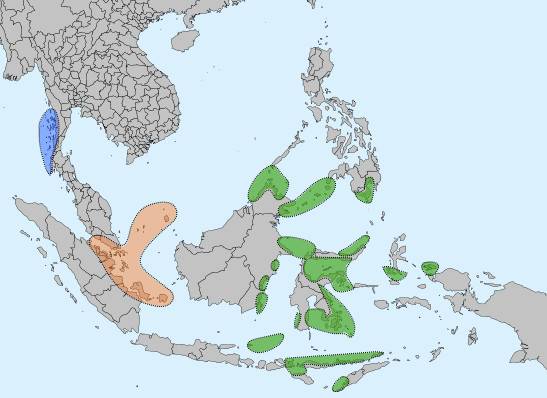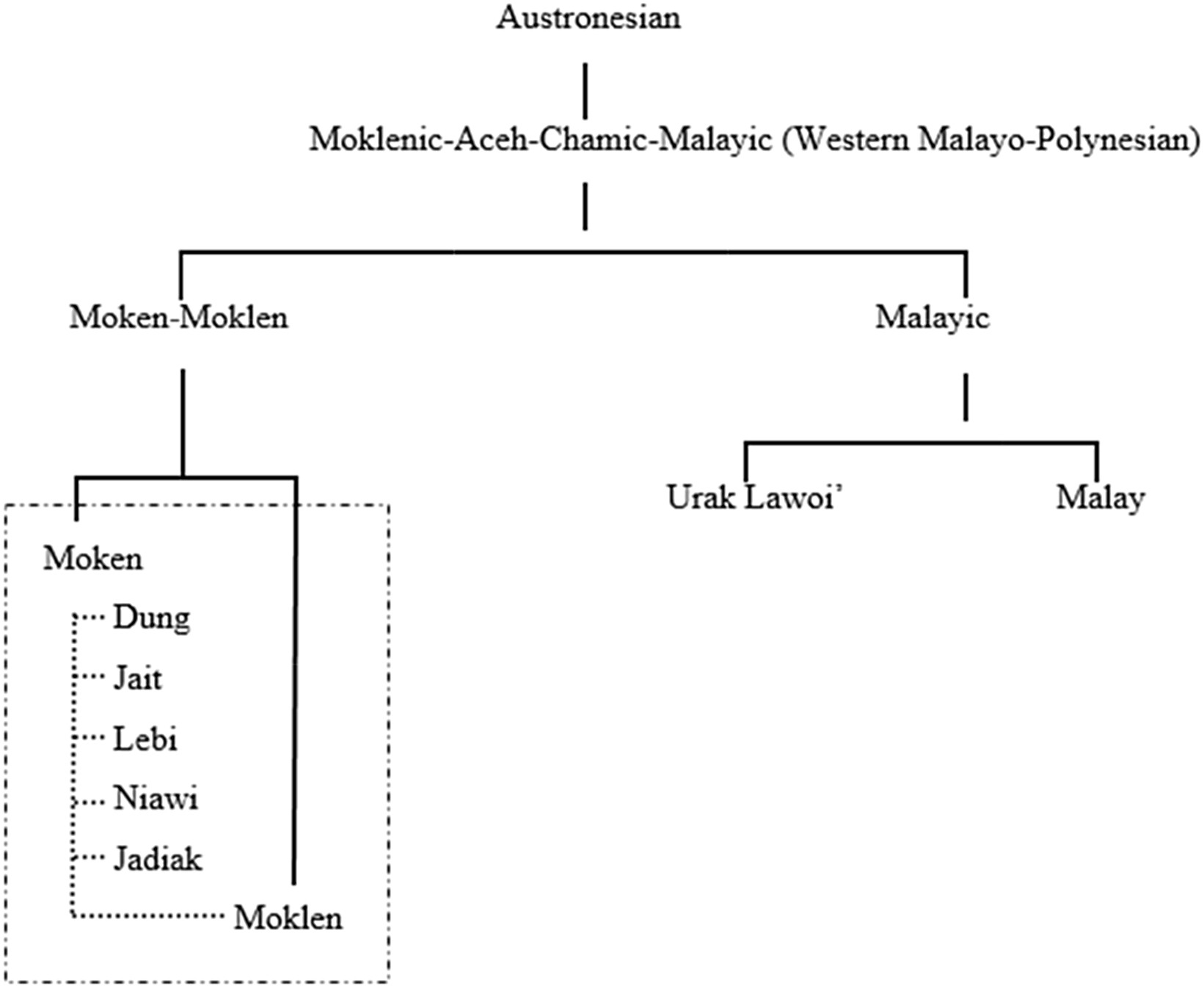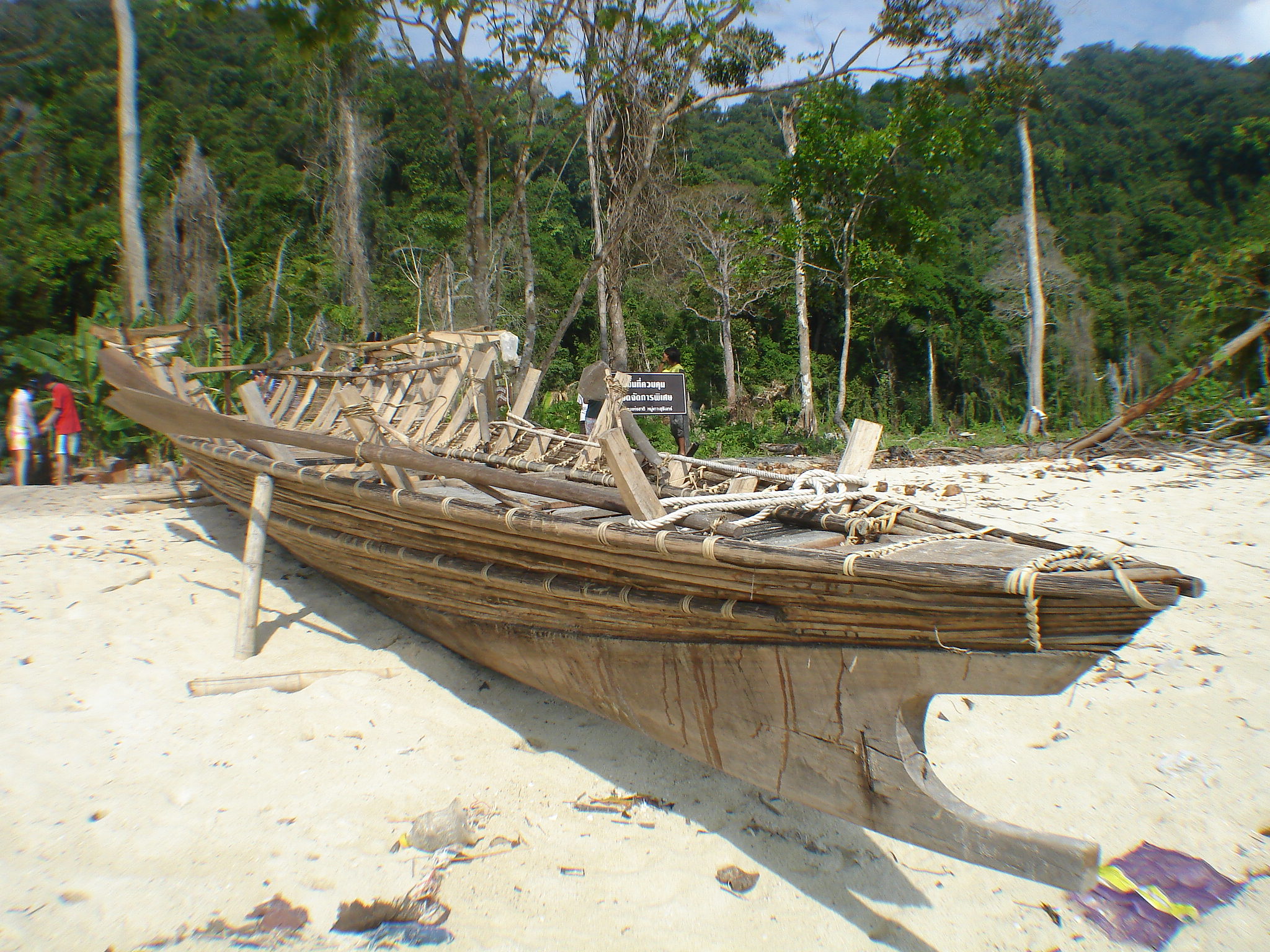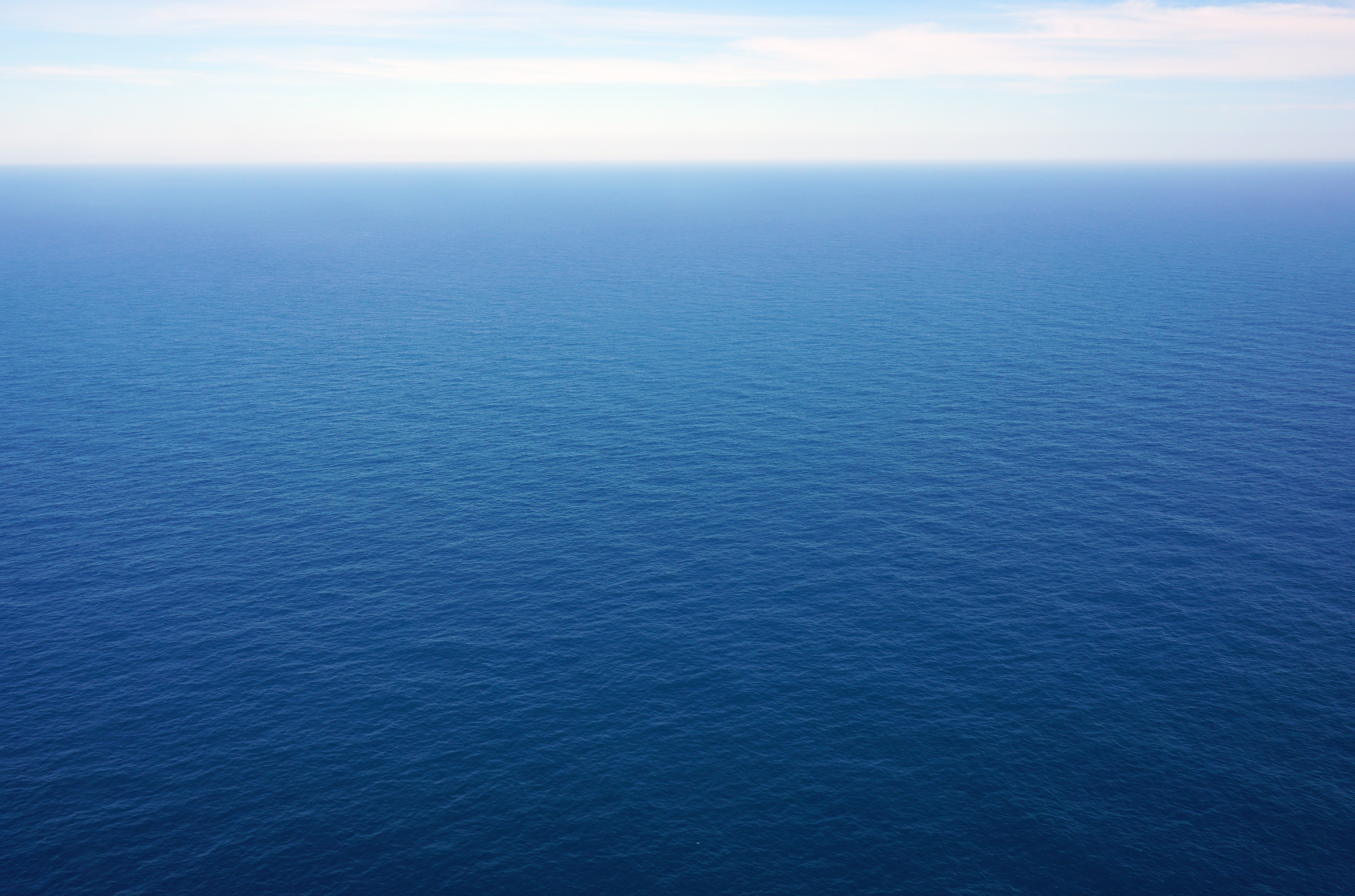|
Moken
The Moken (also Mawken or Morgan; ; ) are an Austronesian people of the Mergui Archipelago, a group of approximately 800 islands claimed by both Myanmar and Thailand, and the Surin Islands. Most of the Moken live a semi-nomadic hunter-gatherer lifestyle heavily based on the sea, though this lifestyle is increasingly under threat. The Moken identify in a common culture and some speak the Moken language, a distinct Austronesian language. Attempts by both Myanmar and Thailand to assimilate the Moken into the wider regional culture have met with very limited success. However, the Moken face an uncertain future as their population decreases and their nomadic lifestyle and unsettled legal status leave them marginalized by modern property and immigration laws, maritime conservation and development programs, and tightening border policies. Nomenclature The people refer to themselves as Moken. The name is used for all of the Austronesian speaking tribes who inhabit the coast and islan ... [...More Info...] [...Related Items...] OR: [Wikipedia] [Google] [Baidu] |
Moken Language
Moken is a Malayo-Polynesian languages, Malayo-Polynesian language spoken by inhabitants in southern Myanmar and Southern Thailand, who refer to themselves as Moken (people) and Mawken. Classification The language is closely related to the Moklen language, and can be mistaken to be similar to Urak Lawoi' language, Urak Lawoi' but is in actuality distantly related. They are also regarded as "sea people" as the speakers are primarily concentrated within the Andaman Sea. History An oral language, Moken is a Malayo-Polynesian language formed after the migration of the Austronesian peoples, Austronesians from Taiwan 5,000–6,000 years ago, resulting in the development of this Austronesian language. While the population consists of 4,000 Moken, only an estimated 1,500 native speakers remain as of 2009, causing the language to be threatened with extinction. Endangerment Out of the ethnic population, the main speakers of Moken are the elder generations as its lack of literacy becomes di ... [...More Info...] [...Related Items...] OR: [Wikipedia] [Google] [Baidu] |
Surin Islands
The Surin Islands (, ) is a continental archipelago of five islands in the Andaman Sea, from the Thai mainland. Administratively, the islands are part of Tambon Ko Phra Thong, Khura Buri district, in Phang Nga province, Thailand. Geography Location The Surin Islands consist primarily of two larger islands, Ko Surin Nuea and Ko Surin Tai, which are separated by a channel approximately wide that becomes dry at low tide. In addition to these, the archipelago includes three smaller islands: Ko Khai (also known as Ko Torinla), Ko Glang (or Ko Pachumba), and Ko Chi (also referred to as Ko Satok). There are also two small rocky islets within the group, named Hin Kong and Hin Rap. Additionally, the limestone pinnacle known as Richelieu Rock (Hin Plo Naam), located about east of Ko Khai and from the mainland, is named in honor of admiral Andreas Richelieu, who was the first and only foreign commander-in-chief of the Thai Navy. Geographically, the Thai-Burmese oceanic border l ... [...More Info...] [...Related Items...] OR: [Wikipedia] [Google] [Baidu] |
Mergui Archipelago
The Mergui Archipelago (also Myeik Archipelago or ''Myeik Kyunzu''; ) is located in far southern Myanmar (Burma) and is part of the Tanintharyi Region. It consists of around 800 islands, varying in size from very small to hundreds of square kilometres, all lying in the Andaman Sea off the western shore of the Malay Peninsula near its landward (northern) end where it joins the rest of Indochina. They are occasionally referred to as the Pashu Islands because the Malay inhabitants are locally called ''Pashu''. Environment Geologically, the islands are characterized mainly by limestone and granite. They are generally covered with thick tropical growth, including rainforest, and their shorelines are punctuated by beaches, rocky headlands, and in some places, mangrove swamps. Offshore are extensive coral reefs. The archipelago's virtual isolation from most of mankind's influence on the natural environment has given the islands and the surrounding waters of the Andaman Sea a great ... [...More Info...] [...Related Items...] OR: [Wikipedia] [Google] [Baidu] |
Bajau People
The Sama-Bajau include several Austronesian ethnic groups of Maritime Southeast Asia. The name collectively refers to related people who usually call themselves the Sama or Samah (formally A'a Sama, "Sama people"); or are known by the exonym Bajau (, also spelled Badjao, Bajaw, Badjau, Badjaw, Bajo or Bayao). They usually live a seaborne lifestyle and use small wooden sailing vessels such as the '' perahu'' (''layag'' in Maranao), ''djenging'' (''balutu''), '' lepa'', and ''vinta'' (''pilang''). They also use medium-sized vessels like the '' jungkung'', ''timbawan'' and small fishing vessels like ''biduk'' and '' bogo-katik''. Some Sama-Bajau groups native to Sabah are also known for their traditional horse culture. The Sama-Bajau are the dominant ethnic group of the islands of Tawi-Tawi. They are also found in other islands of the Sulu Archipelago, coastal areas of Mindanao and other islands in the southern Philippines; as well as northern and eastern Borneo, Sulawesi, and ... [...More Info...] [...Related Items...] OR: [Wikipedia] [Google] [Baidu] |
Orang Laut
The Orang Laut are several seafaring ethnic groups and tribes living around Singapore, Peninsular Malaysia and the Indonesian Riau Islands. The Orang Laut are commonly identified as the Orang Seletar from the Straits of Johor, but the term may also refer to any Malayic languages, Malayic-speaking people living on coastal islands, including those of the Mergui Archipelago in Myanmar and Thailand, commonly known as Moken. The population of the tribe in the 21st century is estimated to be 420,000 people. Etymology The Malay language, Malay term literally means 'sea peoples'. The Orang Laut live and travel in their boats on the sea. They made their living from fishing and collecting sea products. Another Malay term for them, (literally 'Strait of Malacca, Straits people'), was brought into European languages as ''Celates''. Distribution Broadly speaking, the term encompasses the numerous tribes and groups inhabiting the islands and estuaries in the Ria Archipelago, the Pulau Tu ... [...More Info...] [...Related Items...] OR: [Wikipedia] [Google] [Baidu] |
Austronesian Languages
The Austronesian languages ( ) are a language family widely spoken throughout Maritime Southeast Asia, parts of Mainland Southeast Asia, Madagascar, the islands of the Pacific Ocean and Taiwan (by Taiwanese indigenous peoples). They are spoken by about 328 million people (4.4% of the world population). This makes it the fifth-largest language family by number of speakers. Major Austronesian languages include Malay (around 250–270 million in Indonesia alone in its own literary standard named " Indonesian"), Javanese, Sundanese, Tagalog (standardized as Filipino), Malagasy and Cebuano. According to some estimates, the family contains 1,257 languages, which is the second most of any language family. In 1706, the Dutch scholar Adriaan Reland first observed similarities between the languages spoken in the Malay Archipelago and by peoples on islands in the Pacific Ocean. In the 19th century, researchers (e.g. Wilhelm von Humboldt, Herman van der Tuuk) started to apply the ... [...More Info...] [...Related Items...] OR: [Wikipedia] [Google] [Baidu] |
Austronesian People
The Austronesian people, sometimes referred to as Austronesian-speaking peoples, are a large group of peoples who have settled in Taiwan, maritime Southeast Asia, parts of mainland Southeast Asia, Micronesia, coastal New Guinea, Island Melanesia, Polynesia, and Madagascar that speak Austronesian languages. They also include indigenous ethnic minorities in Vietnam, Cambodia, Myanmar, Thailand, Hainan, the Comoros, and the Torres Strait Islands. The nations and territories predominantly populated by Austronesian-speaking peoples are sometimes known collectively as Austronesia. The group originated from a Early human migrations, prehistoric seaborne migration, known as the Austronesian expansion, from Taiwan, circa 3000 to 1500 BCE. Austronesians reached the Batanes, Batanes Islands in the northernmost Philippines by around 2200 BCE. They used sails some time before 2000 BCE. In conjunction with their use of Austronesian vessels, other maritime technologies (notably catamarans, out ... [...More Info...] [...Related Items...] OR: [Wikipedia] [Google] [Baidu] |
Thailand
Thailand, officially the Kingdom of Thailand and historically known as Siam (the official name until 1939), is a country in Southeast Asia on the Mainland Southeast Asia, Indochinese Peninsula. With a population of almost 66 million, it spans . Thailand Template:Borders of Thailand, is bordered to the northwest by Myanmar, to the northeast and east by Laos, to the southeast by Cambodia, to the south by the Gulf of Thailand and Malaysia, and to the southwest by the Andaman Sea; it also shares maritime borders with Vietnam to the southeast and Indonesia and India to the southwest. Bangkok is the state capital and List of municipalities in Thailand#Largest cities by urban population, largest city. Tai peoples, Thai peoples migrated from southwestern China to mainland Southeast Asia from the 6th to 11th centuries. Greater India, Indianised kingdoms such as the Mon kingdoms, Mon, Khmer Empire, and Monarchies of Malaysia, Malay states ruled the region, competing with Thai states s ... [...More Info...] [...Related Items...] OR: [Wikipedia] [Google] [Baidu] |
Malay (ethnic Group)
Malays ( ; , Jawi: ) are an Austronesian ethnoreligious group native to eastern Sumatra, the Malay Peninsula and coastal Borneo, as well as the smaller islands that lie between these locations. These locations are today part of the countries of Malaysia, Indonesia (eastern and southern Sumatra, Bangka Belitung Islands, West Kalimantan and Riau Islands), the southern part of Thailand ( Pattani, Satun, Songkhla, Yala and Narathiwat), Singapore and Brunei Darussalam. There is considerable linguistic, cultural, artistic and social diversity among the many Malay subgroups, mainly due to hundreds of years of immigration and assimilation of various regional ethnicity and tribes within Maritime Southeast Asia. Historically, the Malay population is descended primarily from the earlier Malayic-speaking Austronesians and Austroasiatic tribes who founded several ancient maritime trading states and kingdoms, notably Brunei, Kedah, Langkasuka, Gangga Negara, Chi Tu, Nakhon Si ... [...More Info...] [...Related Items...] OR: [Wikipedia] [Google] [Baidu] |
Sea Nomads Distribution Map
A sea is a large body of salt water. There are particular seas and the sea. The sea commonly refers to the ocean, the interconnected body of seawaters that spans most of Earth. Particular seas are either marginal seas, second-order sections of the oceanic sea (e.g. the Mediterranean Sea), or certain large, nearly landlocked bodies of water. The salinity of water bodies varies widely, being lower near the surface and the mouths of large rivers and higher in the depths of the ocean; however, the relative proportions of dissolved salts vary little across the oceans. The most abundant solid dissolved in seawater is sodium chloride. The water also contains salts of magnesium, calcium, potassium, and mercury, among other elements, some in minute concentrations. A wide variety of organisms, including bacteria, protists, algae, plants, fungi, and animals live in various marine habitats and ecosystems throughout the seas. These range vertically from the sunlit surface and shoreline ... [...More Info...] [...Related Items...] OR: [Wikipedia] [Google] [Baidu] |







